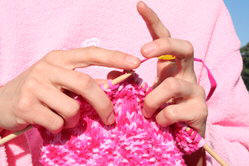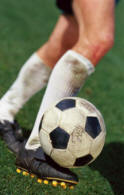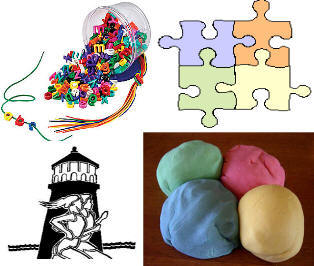Physical DevelopmentTopics
Fine Motor and Gross Motor Skills DevelopmentThe human body is capable of moving in many different ways and positions. Simple daily physical routines like brushing one's teeth or taking a walk requires the movement and control of various muscle groups and connective tissue that surrounds the human skeleton. Like all mammals, humans are not born with the necessary skills needed to move in a goal directed manner. Motor skills are learned and developed overtime throughout a persons lifespan and can be influenced either positively or negatively, depending on the situation (Auger and Rich, 2007). If a student fails to develop simple motor control by a certain age or shows poor limb coordination, balance, or posture, due to a lack of stimulation at home or at school, it is the teachers responsibility to target the student's physical weaknesses and devise specialized strategies that can enhance the students physical performance.
Figure 1. Dexterity is helpful when knitting.
Figure 2. Playing physical sports can help develop one's balance and coordination (gross motor muscle control). There are two types of motor skills: gross motor and fine motor skills. It has been noted that large muscles generally grow faster than the smaller ones during a child's growth period. Thus, gross motor development is sometimes considered the foundation for other areas of development, including fine motor skills. Gross motor skills are developed, improved, and better controlled throughout early childhood (Auger and Rich, 2007). They include movements like crawling, sitting, running, and jumping, which come from large muscle groups, and require balance and coordination (Figure 2). On the contrary, fine motor skills have more to do with precision and the use of smaller muscles groups to do more delicate tasks, such handwriting, cutter paper with scissors, or painting. It includes the ability to manipulate small objects with their hands and fingers (known as dexterity), similar to putting together pieces of a puzzle, in coordination with the eyes (Auger and Rich, 2007) (Figure 1). It also important to note that during late adolescence, muscle growth continues in boys because of androgen production; therefore, it is natural for males to be clumsier than females (Cox et al., 2002).
Figure 3. Various activities that can help stimulate fine motor and gross motor development. In order for a teacher to promote and assist students in the development of these skills, they must have a good understanding of the types of activities that will help stimulate these areas of physical growth. For instance, an elementary school teacher may want to include simple activities like painting with different types of brushes, alternating between large, stubby brushes and smaller, finer brushes (Versluys, 2002). This will allow the students to be more precise in their work and to develop a better grip, which is needed for more defined writing. Students who are just starting to learning how to print may experience frustration using a regular pencil. To help the student develop the fine motor skills needed to use a regular pencil, a teacher can assist the child by providing a primary-size pencil. This will help improve their writing, and in turn, assist their self-esteem by providing a sense of accomplishment. Likewise, if a high student feels uncomfortable writing an answer to a question on board because they feel their hand writing is messy, a teacher should also provide the option to have their students respond verbally instead. For younger students, such as preschoolers and kindergarteners, a teacher may encourage students to play with material that is more manipulative, such putting together pieces of a puzzle or molding a sculpture out of play-dough (Versluys, 2002). This will allow them to better develop hand-eye coordination and gain better control over their finger movement. To teach gross motor skills, elementary school teachers can plan their physical education lessons to include activities with greater muscle movement, such as running, dancing, and team sports that promote balance and coordination. High school science teachers can also encourage gross motor development by taking their students out on nature walks. Overall, knowing about these skills will help an educator better understand where there students are coming from, suspect any delays students may be experiencing, and better prepare for lesson plans by adding more time for physical activities.
|




